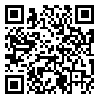Volume 5, Issue 3 (9-2016)
JCP 2016, 5(3): 313-329 |
Back to browse issues page
Download citation:
BibTeX | RIS | EndNote | Medlars | ProCite | Reference Manager | RefWorks
Send citation to:



BibTeX | RIS | EndNote | Medlars | ProCite | Reference Manager | RefWorks
Send citation to:
Hodjat S H. Effects of crowding and stress on locusts, aphids, armyworms and specifically the hemipteran Dysdercus fasciatus Sign. (Hemiptera: Pyrrhocoridae). JCP 2016; 5 (3) :313-329
URL: http://jcp.modares.ac.ir/article-3-1290-en.html
URL: http://jcp.modares.ac.ir/article-3-1290-en.html
Department of Plant Protection, Jalal Afshar Zoological Museum, College of Agriculture and Natural Resources, University of Tehran, Karaj, Iran.
Abstract: (6346 Views)
Insect stress effects have been the subject of many reviews including heat, cold, and population stress. Production of winged aphids in unfavorable conditions or migrant phase of locust and armyworms, are reactions to crowding. Various crowding levels stress and treatment with low to high sub-lethal doses of insecticides at first had no effect but reduced Dysdercus fasciatus Sign. reproduction at higher levels. Stressors such as, crowding, toxins of sub-lethal doses of pesticides, host plant chemicals and environmental pollutants may produce comparable effects on insects.Stress may cause dispersion, migration, and insect pest outbreak.Locusts, aphids, armyworms and D. fasciatus react via plasticity to stressors including crowding stress by production of polymorphic phase. Neurohormones generally regulate the hormonal production of corpora alata, corpora cardiac and affect insect metabolism. This review relates the stress of crowding and insect phase to insect–plant relationships and the route to pest outbreak.
Article Type: Review |
Subject:
Agricultural Entomology
Received: 2015/09/21 | Accepted: 2016/01/15 | Published: 2016/06/1
Received: 2015/09/21 | Accepted: 2016/01/15 | Published: 2016/06/1
| Rights and permissions | |
 |
This work is licensed under a Creative Commons Attribution-NonCommercial 4.0 International License. |








